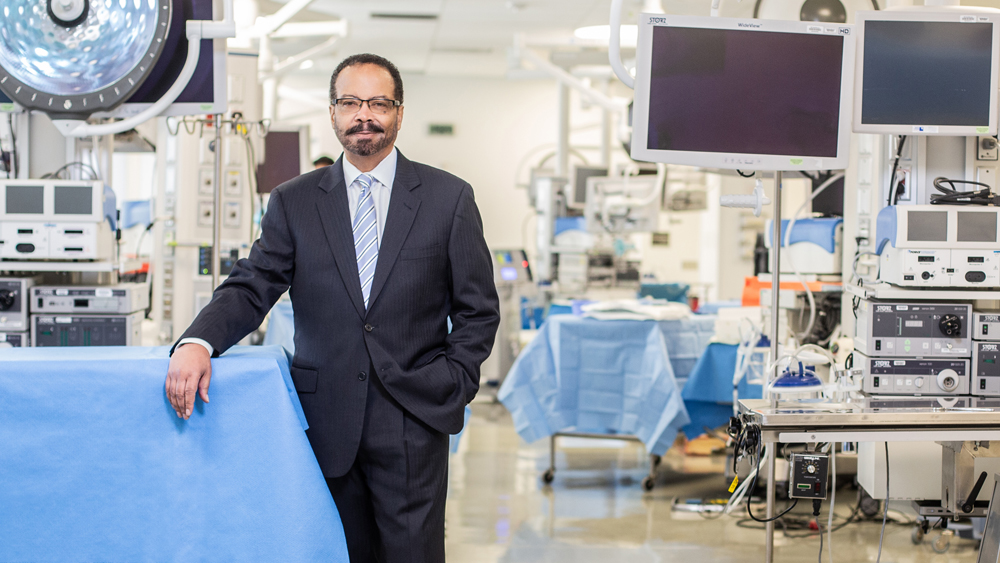
Dr. Roderic I. Pettigrew, a Ph.D. and M.D. who is the Robert A. Welch Professor in the College of Medicine and professor of biomedical engineering in the College of Engineering at Texas A&M University, has been elected into the American Academy of Arts and Sciences. The honorific academy, one of the nation’s oldest, was founded in 1780 by John Adams, George Washington, Thomas Jefferson and Benjamin Franklin to recognize remarkable people working to advance the public good. Members are categorized into five classes; however, Pettigrew has joined under the prestigious new interclass category, which identifies members recognized in more than one class.
“I have always been drawn to the intersection and convergence of the physical sciences, life sciences and engineering,” said Pettigrew, who also spent 15 years as the founding director of the National Institute of Biomedical Imaging and Bioengineering. “My ultimate research goal is to eliminate heart attacks and strokes. The way to do that is by integrating a range of disciplinary techniques, that is through transdisciplinary research.”
Pettigrew hopes to develop a “beyond the state of the art” MRI system able to see the wall of the coronary artery in fine detail, pushing the limits of MRI physics to the maximum point that is tolerated by the human body. “Such a scanner — which could help eliminate heart attacks —would be unique in the world,” he said.
Pettigrew is also collaborating with Dr. John Cooke at Houston Methodist Hospital to study the problem of cell aging and its stimulation of atherosclerosis, using a human progeria model. “We are studying the behavior of endothelial cells at the cellular and molecular level,” he explained. “This includes understanding the biomechanics of cells, the impact of aging at the cellular level and the impact of molecular therapies such as delivering the gene that codes for telomere length. We are studying the mechanogenomics of rapidly aging cells and the response to molecular therapies.”
Telomeres are protective caps on the ends of chromosomes that protect against the effects of cell aging, or cell senescence. Every time cells divide and chromosomes get reproduced, they lose some protective coating. Defects resulting from the protective caps wearing away over time can cause cellular dysfunction. Identifying how to restore that coating can return cells to a more functional state. Given that one of the major factors leading to heart disease is cell senescence, Pettigrew is interested in understanding and modulating this process through investigating progeria cells and why they behave differently.
Pettigrew also serves as executive dean for the Engineering Medicine (EnMed) collaboration between Texas A&M and Houston Methodist Hospital, in which students study a blended engineering and medicine curriculum to earn both M.D. and M.E. degrees in only four years.
“EnMed has emerged from a movement that recognizes the inherent value in merging engineering and medicine with the biological and physical sciences,” Pettigrew said. “Traditionally, we’ve separated these areas as individual disciplines. But in life, there are no boundaries.”
EnMed graduates, called “physicianeers,” will be conceptually fluent in multiple scientific languages, such as engineering and medicine, so that they better understand life processes and are trained to innovate and invent solutions across the whole health care landscape.
“The goal is to transform the health care ecosystem so that we all have good health through the entirety of our lives,” said Pettigrew.
Since its founding 240 years ago, the American Academy of Arts and Sciences has welcomed many distinguished members that span across history and include exceptional names such as John F. Kennedy, Martin Luther King Jr., Toni Morrison, Charles Darwin, Albert Einstein, Winston Churchill, Akira Kurosawa and Nelson Mandela. Pettigrew will join their ranks in Cambridge, Massachusetts on Friday, Oct. 9.